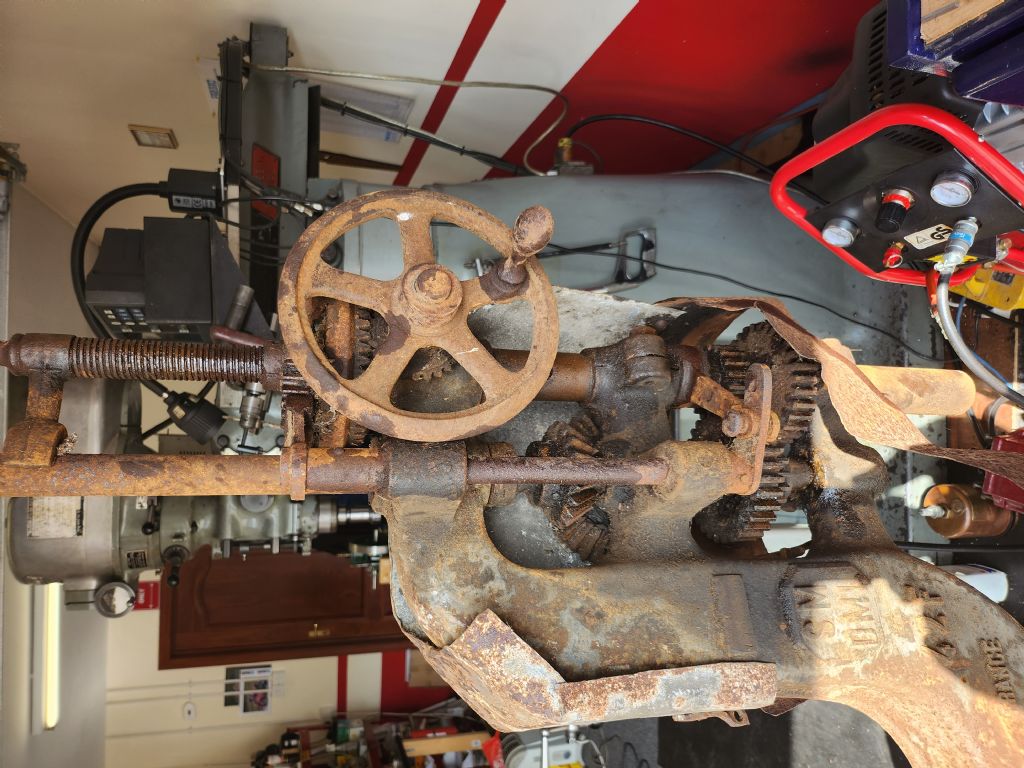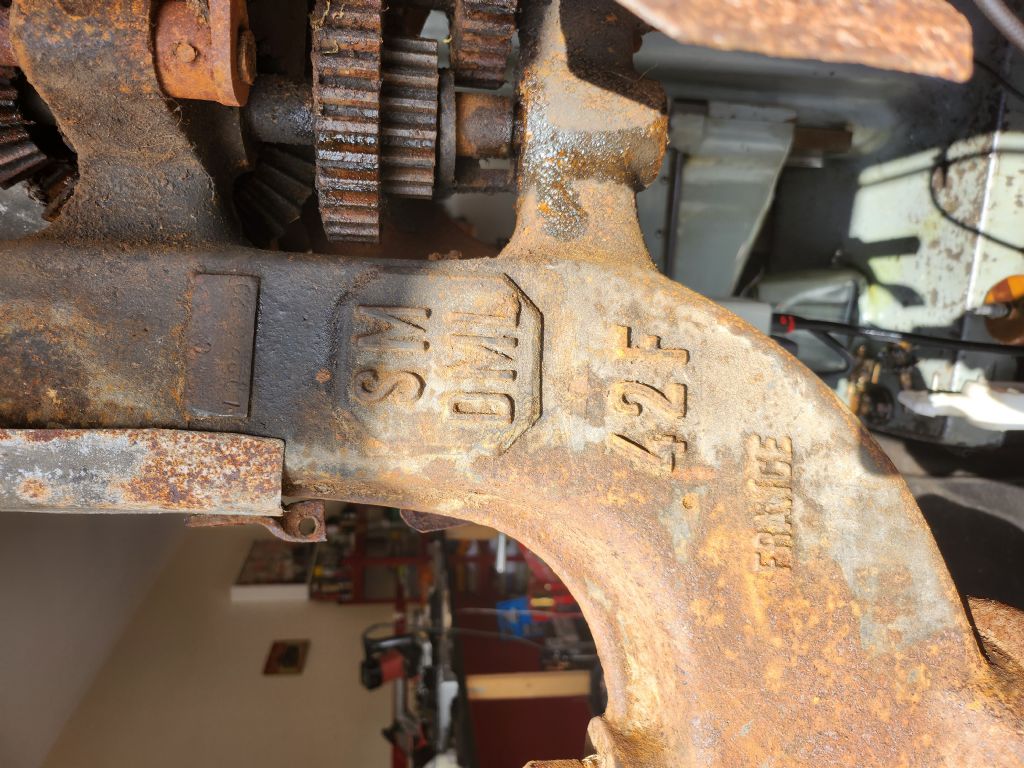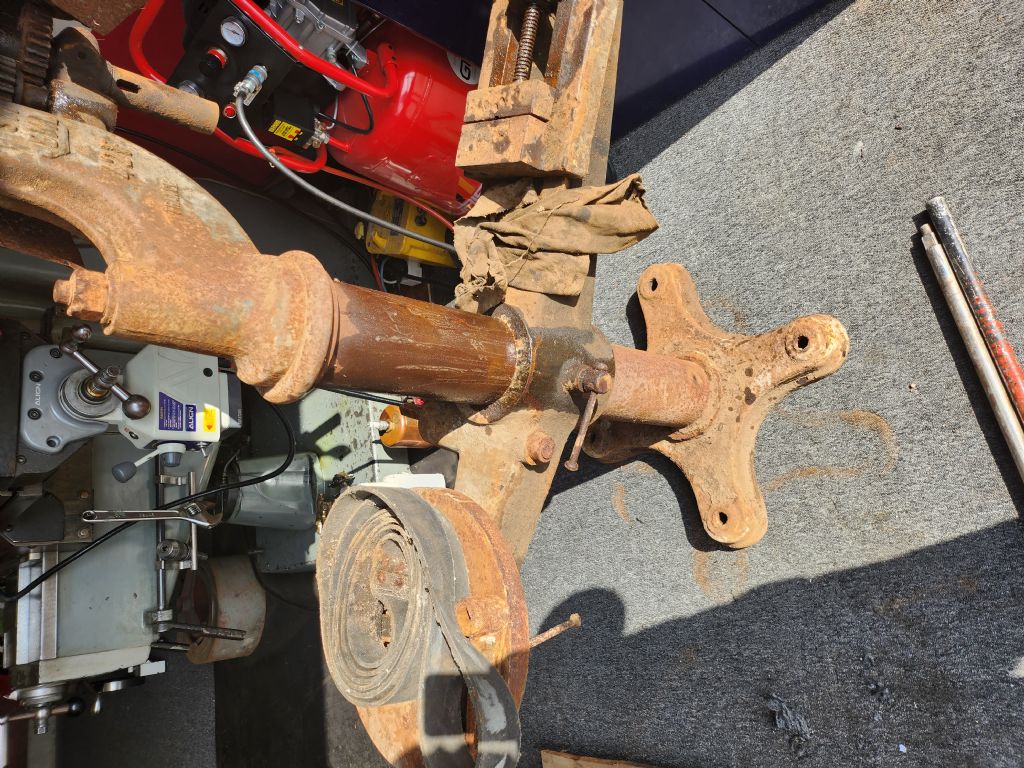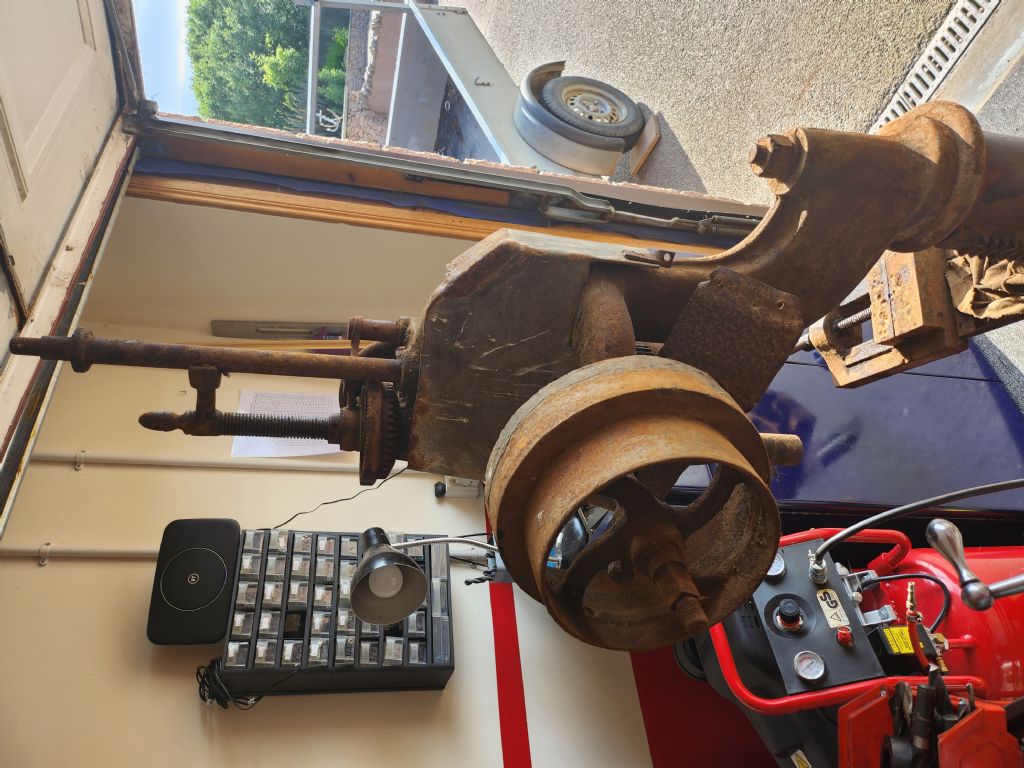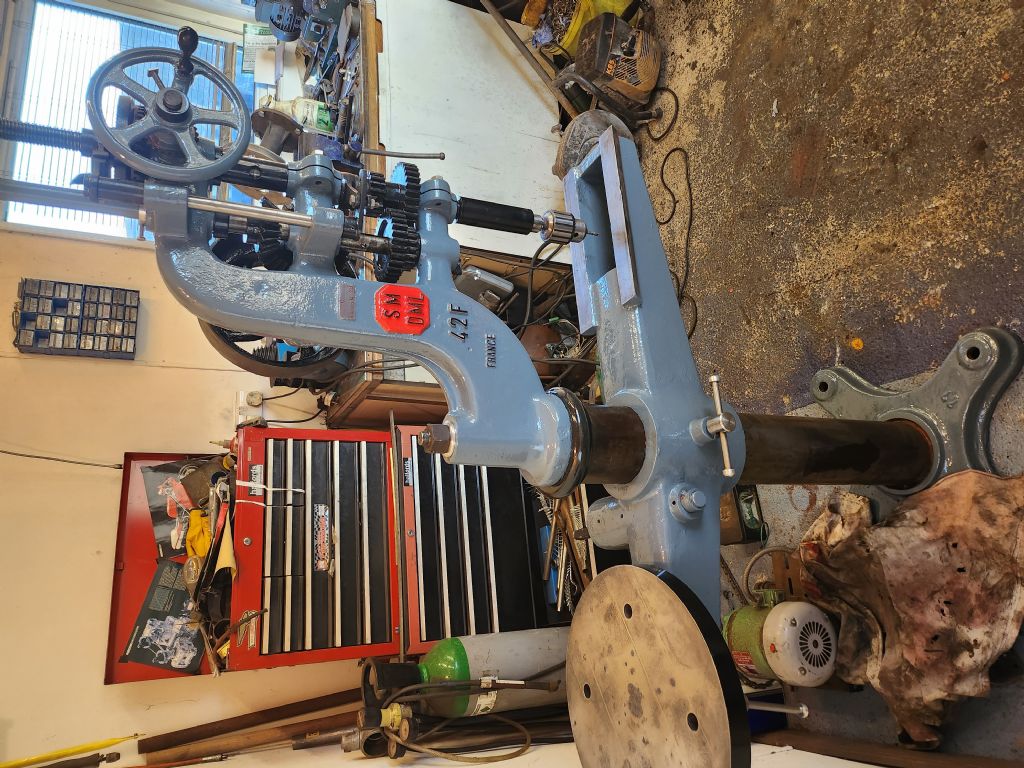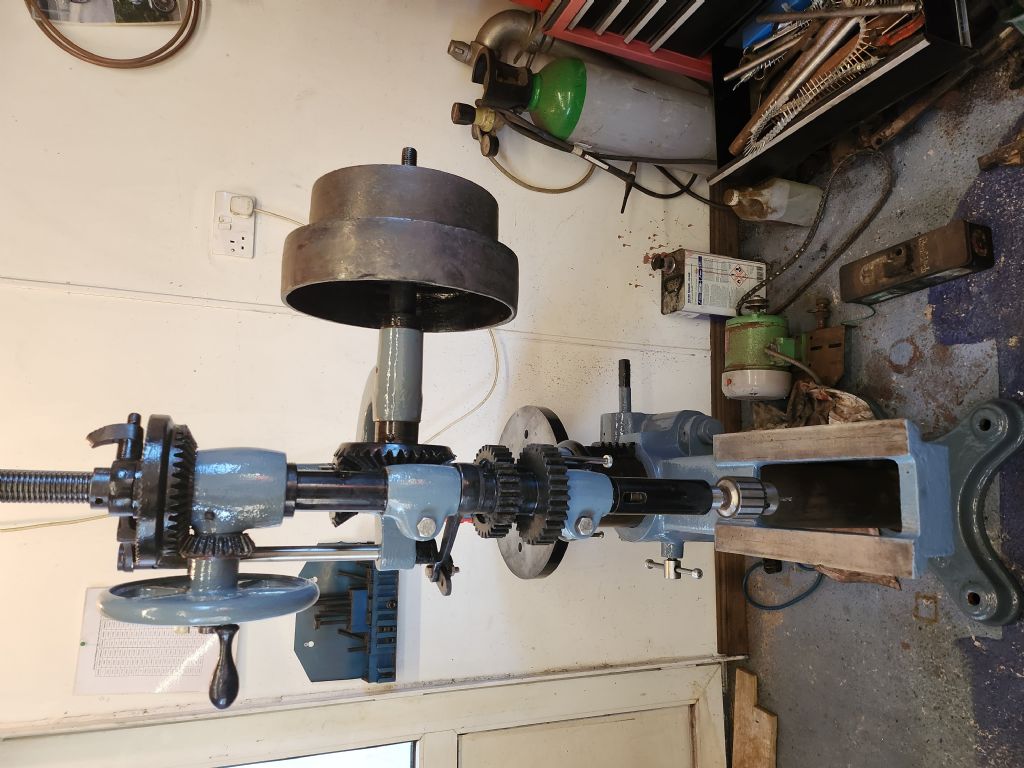Calculating the ratios is simple division, but those pulley calculators are valuable for giving the belt lengths for diameters and distances. I think I have one somewhere.
I have for my sins four hefty great Mod 3 spur gears that can be assembled into a back-gear type configuration giving about a 4:1 reduction on their direct-drive mode, and I have been toying with designs for that.
However it may a lot simpler to go for all-belt drive with a link-belt or chain for the final part, as the spindle pulley is surrounded by a lot of good honest cast-iron in one piece.
The motor I have a single-phase 1HP machine of 1400rpm (actually 1350 but using 1400 makes for easier sums).
So I need a total ratio of 20:1 for a cutter speed of 70rpm, a figure I gained from studying various text-books, with an option of, say, 140rpm for slitting-saws and drills. I'm tempted to use a single-way cone-pulley pair on the motor and first-motion shaft; or more safely just two pulleys so it will always drive downwards; then 65mm to a 250mm pulley I have in stock. So that's maybe 2: 1 then 65: 250 gives 182 rpm at the pulley above the machine.
++++
Talking of elderly French machine-tools…..
Many years ago I rescued from a scrap-yard a very ancient, very unusual, French-built, Huré Universal Mill. We set it up in the workshop the club rented then, and drove it from a 3ph 3HP motor from an ancient shaper the mill had replaced.
This was an odd machine. It had a double head, L-shaped in plan, that could be rotated on the column to bring into use either the vertical or horizontal spindle – followed by a lot of flat-belt changing to suit.
The spindle ended in a threaded nose with a large, coarse-thread nut like a pipe union, but with a finer thread through the smaller bore, to hold the tooling in a taper of unknown type. None of us knew how that was meant to work as it had come with free swarf but no tooling. So I made a threaded insert to carry a small lathe chuck to hold the cutters.
The thing was so hefty and had so many plain journals from motor to spindle that it took all the effort the poor motor could muster to bring it up speed!
it was never really much use to us and eventually I passed it on to Weston Zoyland Pumping-Station Museum. I understand it later went travelling again to a new owner. So at least I had saved the poor old thing. I hope it's now in use somewhere!
Huré later changed its name to Huron, and seemed to have been manufacturing machine-tools from the 1880s to the 1970s. Lathes.co shows my specimen to have been a type introduced in the 1890s.
Nigel Graham 2.


